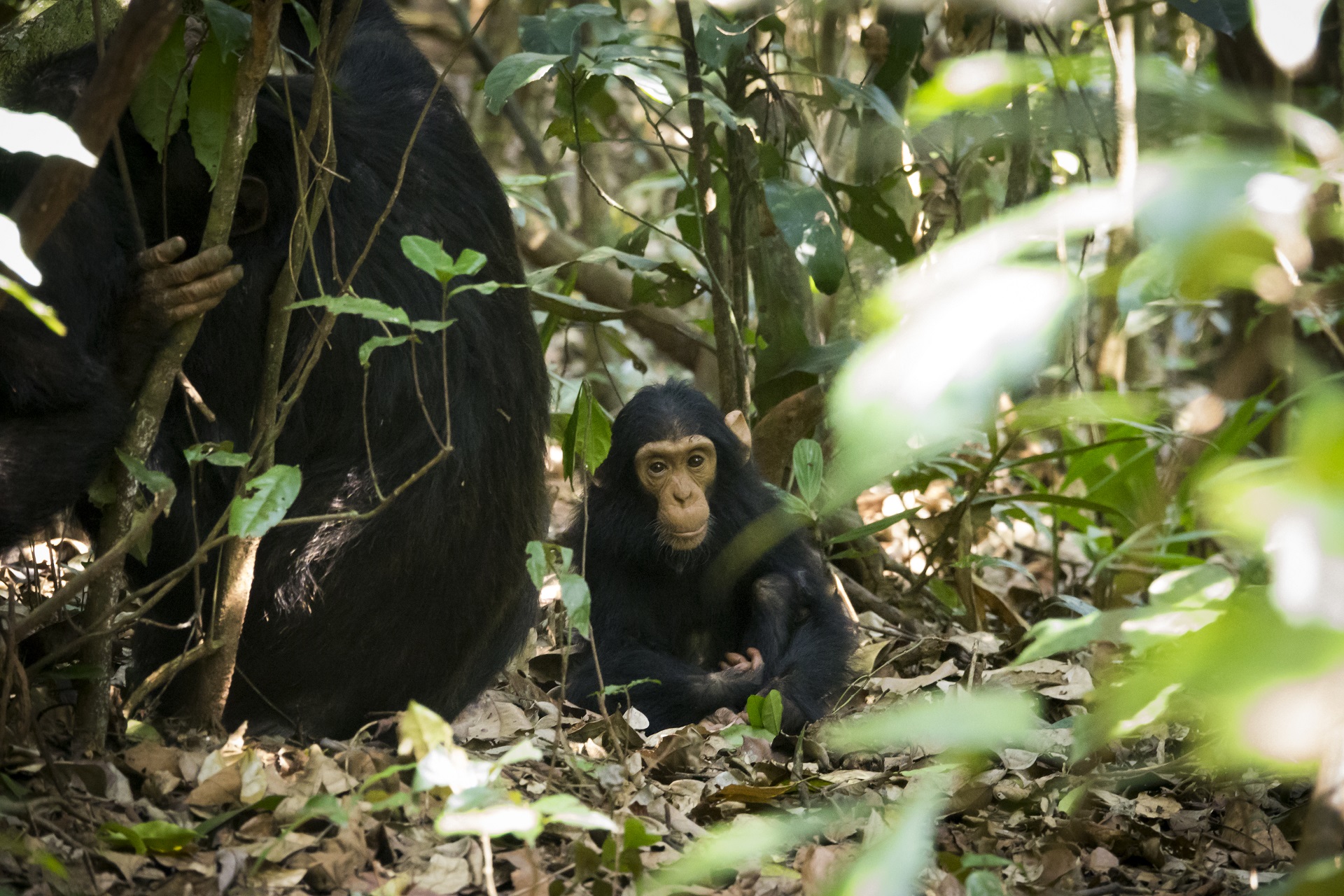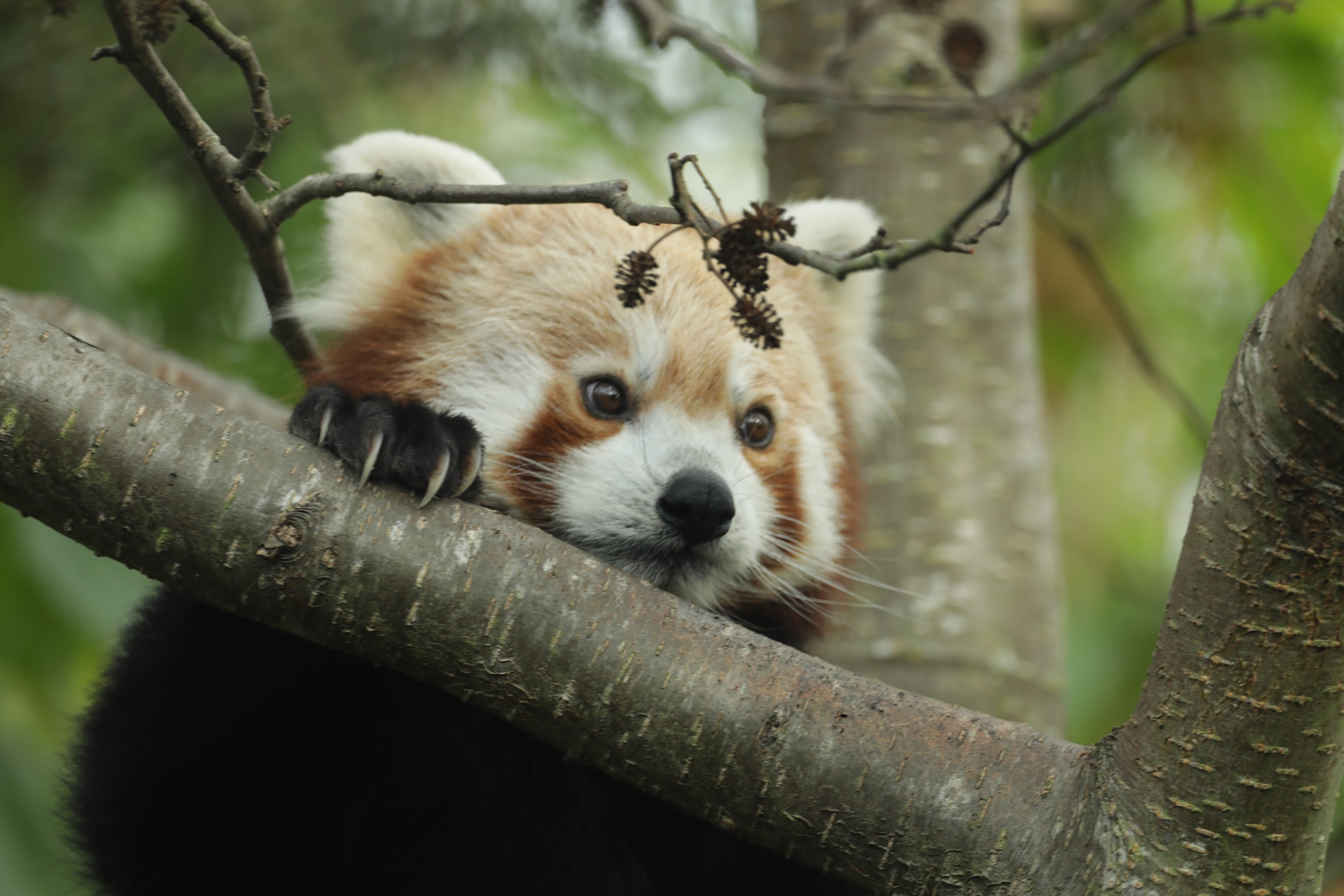Exploring the Budongo Forest
Posted 14 Jul 2024

Conservation Champions
So many endangered animals vanishing in the wild. These animals need us to save them. If we don't help them – who will?
Conservation Champions are helping to save 50 of the world's most endangered species from extinction.
As a Conservation Champion, you'll be at the heart of our team. You'll receive a welcome pack and regular copies of Stories from the Wild free into your inbox.
Read a portion of the first Stories from the Wild below, where we explore the Budongo Forest in Uganda.
Explore the forest
We had been waiting quietly under the fig tree for hours. My neck was sore from craning to look up at the canopy. The grey tree trunk soared from mighty buttress roots into a tapestry of green leaves outlined against the sunlight. It had rained heavily in the morning, the forest echoing with crashes of thunder. Now the air under the dappled canopy was still and thick with humidity. Cicadas thrummed – a wall of sound rising and falling. I listened to the croak of a hornbill and the familiar ‘whoosh whoosh’ of its wings as it flew above us. The Budongo Forest, East Africa’s largest intact rainforest, was waking up after the storm.
I strained to look up at a thick branch of the fig tree, on top of which there was a clump of dark green leaves and only just discernibly, on top of that, a black mass of chimpanzee fur. This was a female called Deli, sleeping in a nest with her new baby. The baby was the newest member of the community and had not yet been given a name by the Budongo Conservation Field Station (BCFS) team. Occasionally the black fur would move, a hand coming into view to scratch an itch, or the tiny pink ear of the baby snuggled close to her mother’s chest would appear, only to be tucked away again.
“She might sleep for a few hours, they tend not to move when it is raining.” Bosco, one of BCFS’s expert field team, looked down at his electronic tablet. 15 minutes had passed and it was time to record Deli’s activity again. He went through the options on the touch screen. Resting – yet another entry!
My stomach rumbled and a monkey squawked, but above us 29 individuals from the Sonso chimpanzee community were snoozing blissfully in the branches, clearly not as hungry as me. We watched and waited. I counted the ants running up the tree trunk and looked at the delicate parasols of mushrooms springing from its crevices – an ecosystem within an ecosystem. It is always good to stop and just look as there is so much to see in the forest.
The BCFS ecological survey team visit 180 species of tree every month to record fruiting. There are an estimated 360 species of birds and 24 mammals in the forest – and thousands of insect species. The closer you look the more you see. I thought about a dwarf kingfisher that had flashed in front of me – tangerine and sapphire – earlier in the morning and an oily back tree cobra looped lazily around a dead truck in the midday heat. The forest is home many old mahoganies, the presence of chimpanzee monitoring work protecting them from removal. All round the edge of the reserve, the forest has disappeared to make way for sugar cane plantation and illegal logging is a continued threat.
There was a thud as a half-eaten fig dropped to the floor. I looked up hopefully, staring hard through binoculars. No movement.
“They are not ready to move yet” Bosco said confidently. I wondered how he knew but of course he was right. Another entry of ‘resting’ was recorded. The data contributes to a vast database of the animal’s lives and researchers come from all over the world, to study the community and develop scientific insight into the evolution of primate behaviour. The fieldworkers from the centre have an expansive knowledge of the animal’s personalities and joke that they can talk chimpanzee. Another 30 minutes passed.
While we were standing waiting in the forest, others from the BCFS team were working hard to maintain this peaceful existence. The snare patrol were out combing the forest tracks to find the near invisible snares which are set to catch small antelopes, but often catch chimps. I had caught sight of Deli’s foot earlier, part of it missing because of a snare injury. The vet team are always on standby to intervene if a chimpanzee became caught in a snare, but today they were out in a local village following up on vaccinations of goats, sheep and pigs. The villagers live in close proximity to the forest edge and vaccination of livestock benefits them and the species they live along side.
A chimp called out and then suddenly the forest was echoing with squawking. “They are on the move!” Bosco said picking up his bag from under the tree.
And then there Deli was, making her way down the tree trunk, clutching her precious bundle. She paused and the baby peeped out. I held my breath. There was the sound of crashing and all around us chimps were on the move on the forest floor. I looked down the track and saw the large male, Frank, ambling off down the path.
“Come” Bosco said heading off down the track. “We will follow them.”
RZSS has supported the work of the Budongo Conservation Field Station since 2005.

